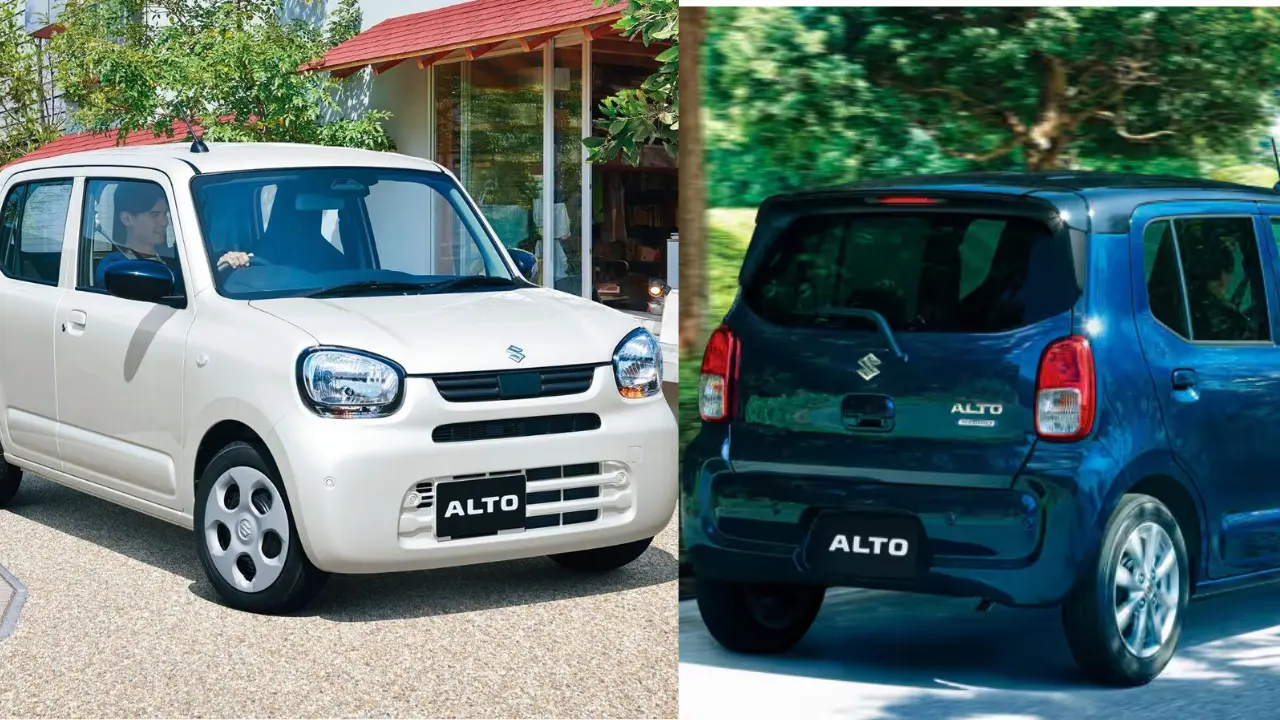The 2025 Suzuki Alto just dropped in Japan, and honestly? The numbers are pretty wild. We’re talking 28.2kmpl here – that’s the kind of mileage that makes you do a double-take. Plus, they’ve thrown in some serious safety tech that you’d normally expect on much pricier rides.
Now, before you get too excited, this Japanese-spec Alto isn’t heading to our showrooms anytime soon. But here’s the thing – it’s giving us a sneak peek into where small cars are headed. And trust me, if these trends make their way to India, budget car buyers are in for a treat.
Design Updates Keep Things Fresh
Suzuki hasn’t gone crazy with the design changes, and that’s probably smart. The Alto was never broken, so why fix it completely? The front end gets this new chrome garnish that cradles a radar module – yeah, even tiny cars are getting radar now. It’s like watching your younger sibling suddenly grow up and get serious about life.
The grille’s bigger, the bumpers are more rounded (better for slicing through air), and there’s this cute little roof spoiler that adds just enough sportiness without looking ridiculous. Oh, and they’ve added Terracotta Pink as a color option – because apparently, even practical cars deserve to look good.
The two-tone combos have been shuffled around too. You can now get Phoenix Red Pearl or Nocturne Blue Pearl with black roofs, or go softer with Chiffon Ivory and Foggy Blue Pearl paired with beige tops instead of white. Small changes, but they matter when you’re staring at your car every morning.
Interior Stays Practical, Gains Tech
Step inside and it’s familiar territory – four seats, sensible layout, everything where you’d expect it. Suzuki knows better than to mess with a formula that works. But they have thrown in an optional 7-inch touchscreen with their Connect telematics system. It’s not groundbreaking, but it brings the Alto into 2025 without cluttering up the dashboard.
The beauty of the Alto has always been its no-nonsense approach. You get what you need, nothing you don’t, and everything just… works.
Read Also: Five Upcoming SUVs That Challenge Hyundai Creta’s Dominance
Safety Gets a Major Boost
Here’s where things get really interesting. The 2025 Alto now comes standard – and I mean standard, across all variants – with something called Dual Sensor Brake Support II. Fancy name aside, it’s basically the car watching the road for you and hitting the brakes if you don’t.
Low-speed brake support works both ways (forward and reverse), there’s lane departure prevention, alerts when the car ahead moves, and parking sensors all around. This isn’t premium car territory anymore – this is just how cars should be made in 2025.
It’s honestly refreshing to see a manufacturer not treating safety as a luxury feature you pay extra for.
Powertrain Options Balance Performance and Efficiency
Under the hood, you’ve got two flavors of the same 658cc three-cylinder engine. The regular one pumps out 46bhp and 55Nm – not exactly earth-shattering, but remember, this thing weighs about as much as a well-fed motorcycle.
The mild-hybrid version bumps things up slightly to 48bhp and 58Nm. The electric motor adds just 2.6PS and 40Nm, but every little bit helps when you’re chasing maximum efficiency. Both engines come with CVT gearboxes, and you can even spec all-wheel drive if Japanese winters are your thing.
But let’s talk about that 28.2kmpl figure for a second. That’s not just good – that’s “did they forget to carry the decimal point?” good. It makes our most efficient cars look positively thirsty.
Variants and Pricing
The lineup spans four variants: A, L, Hybrid S, and Hybrid X, priced between 1,142,900 to 1.639 million yen. In rupee terms, that’s roughly ₹7-11 lakh, which sounds steep until you remember this is Japan, where a bowl of ramen costs more than a full meal here.
Still, it gives you an idea of what comprehensive safety tech and hybrid systems add to the bottom line.
What This Means for India
Look, this exact Alto isn’t coming to India – different markets, different needs, different price points. But the writing’s on the wall. Indian buyers are getting smarter about fuel efficiency and safety, and manufacturers are taking notice.
The fact that radar-based safety systems and mild-hybrid tech are becoming standard on entry-level cars in Japan suggests it’s only a matter of time before these features trickle down to our market. Maybe not tomorrow, maybe not next year, but eventually.
And when they do? Budget car buyers in India are going to wonder how they ever managed without them.
